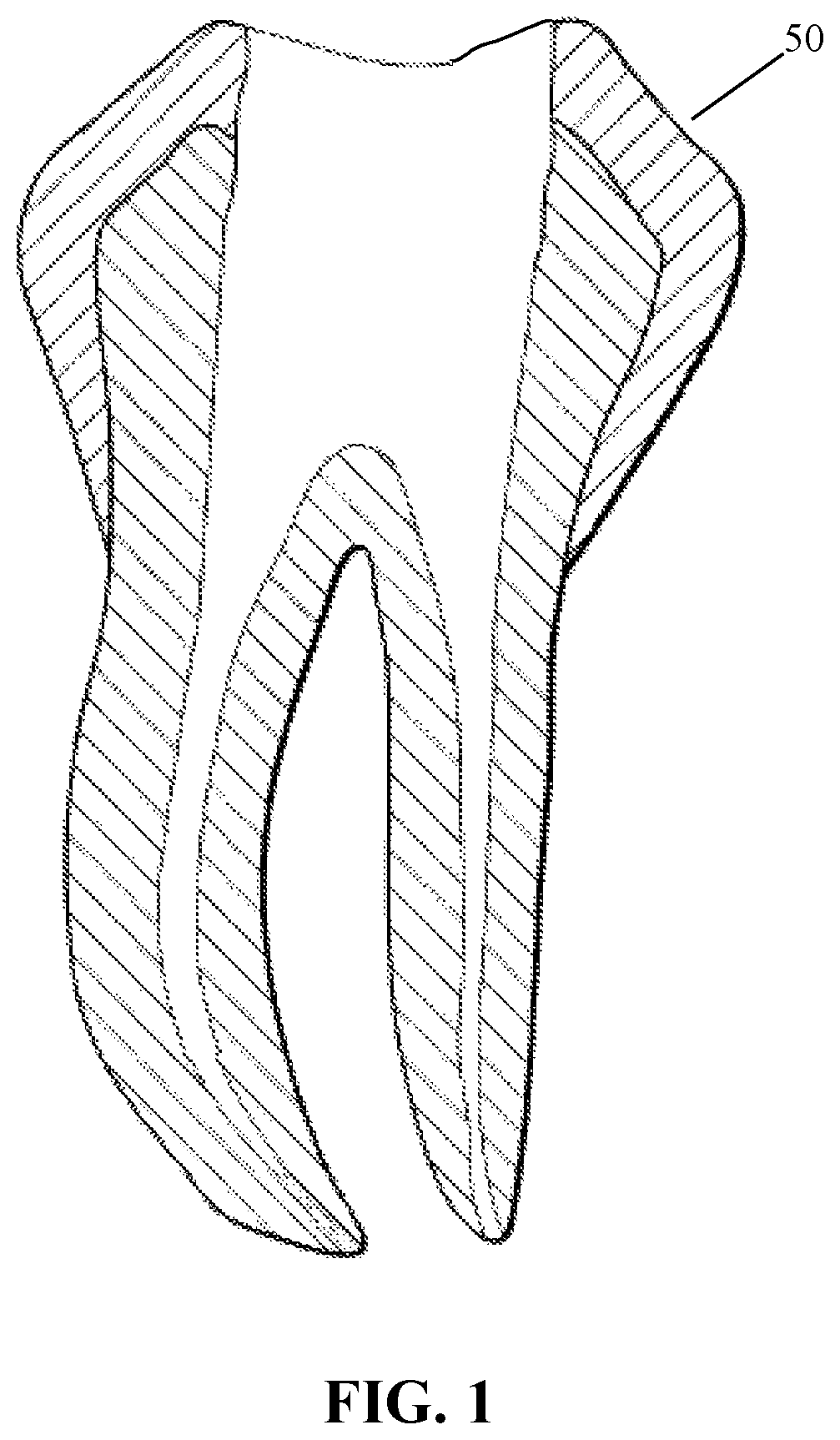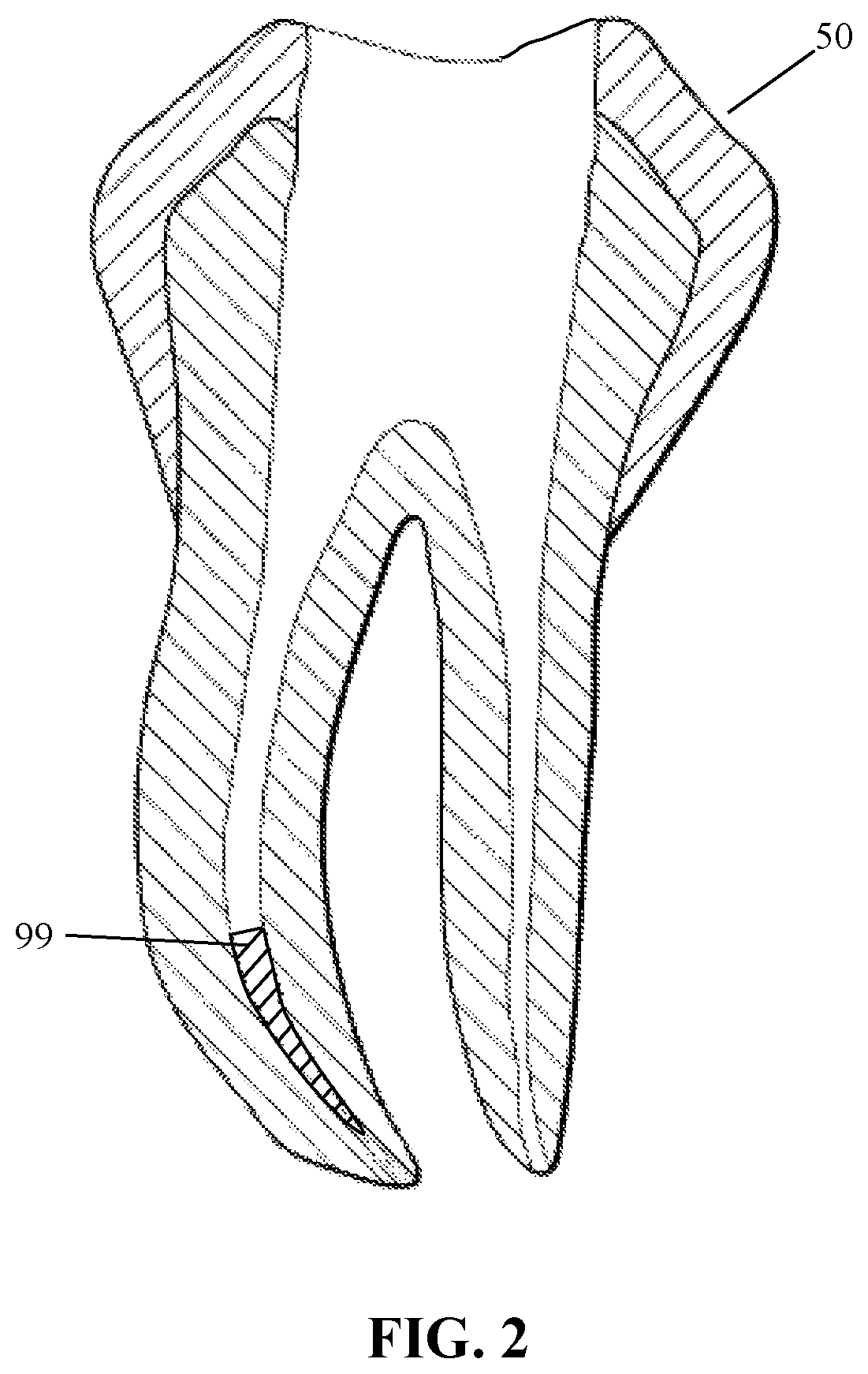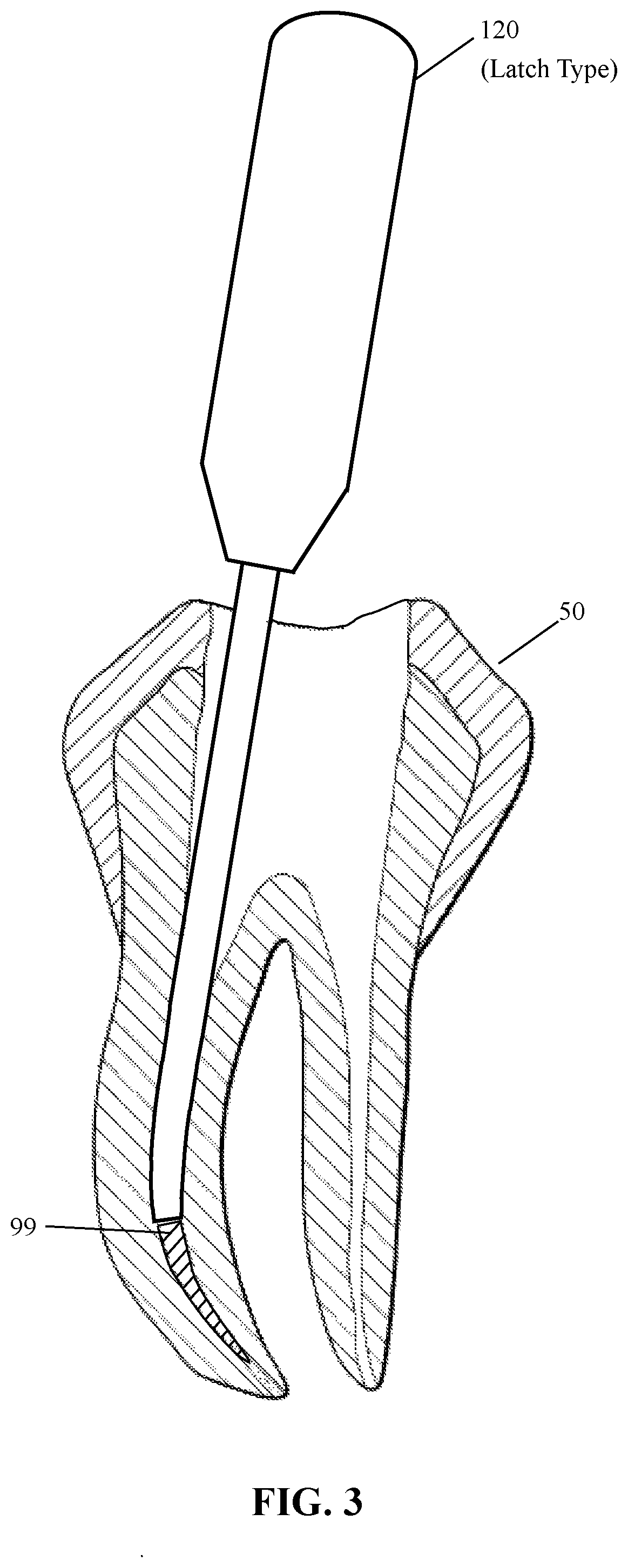Method and extraction device for removal of broken root canal file fragment
a technology for root canals and metal tools, applied in the field of dental surgery, can solve the problems of cyclic fatigue, failure of the file used, and failure of treatment, and achieve the effect of reducing static friction and facilitating tool rotation
- Summary
- Abstract
- Description
- Claims
- Application Information
AI Technical Summary
Benefits of technology
Problems solved by technology
Method used
Image
Examples
first embodiment
[0063]In the present invention for removing a root canal file fragment, as shown in FIG. 3, a pilot hole drill 120 may be used for enlarging the root canal in which the file fragment 99 is wedged. In one embodiment the drill may be one millimeter in diameter, and in other embodiments, another size may be used as required. FIG. 4 illustrates the enlarged root canal opening after removal of the pilot hole drill 120 shown in FIG. 3. Next, as shown in FIG. 5, an umbrella drill 140 is inserted into the root canal, and is used to form an opening in the canal around the coronal end of the file fragment 99. In one embodiment the umbrella drill diameter ($) may be 1.0 millimeter, and in other embodiments, another size (e.g., 1.2 mm) may be used as required. In other embodiments, other methods of forming an opening about the end of the file fragment may alternatively be used.
[0064]FIG. 6 shows the opening formed around the coronal end of the file fragment 99 after the umbrella drill has been ...
second embodiment
[0065]In the present invention for removing a file fragment 99 from a root canal, the pilot hole drill 120 and the umbrella drill 140 may be used as noted above to form an opening in the canal around the coronal end of the file fragment 99. Then, as shown in FIG. 7, a tool 180 with a multi-pronged tip may be inserted into the root canal such that the prongs may surround the exposed end of the file fragment. As with the other embodiment, each of the prongs may be formed with curvature that may correspond to the curved shape of the particular file fragment that had become lodged in the canal. In one embodiment the curvature of the inside surface of the prongs may match the curvature of the exposed portion of the file fragment very closely (i.e., have the same radius and / or taper), and may also be formed to be offset using a gap C from the envelope of the tile fragment (see FIG. 7C). In another embodiment, the curvature of the inside surface of the prongs may be formed to be slightly l...
PUM
 Login to View More
Login to View More Abstract
Description
Claims
Application Information
 Login to View More
Login to View More - R&D
- Intellectual Property
- Life Sciences
- Materials
- Tech Scout
- Unparalleled Data Quality
- Higher Quality Content
- 60% Fewer Hallucinations
Browse by: Latest US Patents, China's latest patents, Technical Efficacy Thesaurus, Application Domain, Technology Topic, Popular Technical Reports.
© 2025 PatSnap. All rights reserved.Legal|Privacy policy|Modern Slavery Act Transparency Statement|Sitemap|About US| Contact US: help@patsnap.com



